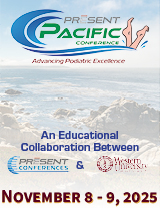11/04/2013 Barry Mullen, DPM
PRP Therapy for Plantar Plate Tears (Charles Morelli, DPM)
I respectfully disagree with Dr. Morelli utilizing
the following rationale and philosophical approach
to foot surgery.
What´s interesting about plantar plate tears is
for many years, as a profession, we didn´t
appreciate this pathology. Even today, I see many
cases misdiagnosed as neuromas because "burning"
pain is often ascribed as a pain descriptor and
when the tear is eccentrically located, the 2nd
toe will drift, often medially, giving a pseudo
Sullivan sign associated with space occupying soft
tissue masses in the web space. For years, many
veteran podiatrists, including myself, performed
2nd metatarsal shortening osteotomies in
conjunction with arthroplasty procedures for rigid
PIPJ flexion contractures and/or arthrotomy with
and without tenototmy and capsulotomy for
overlapped, subluxed 2nd MTP/hammer digit
syndrome. We simply didn´t recognize the pathology
back then and therefore did not repair the
etiology of the deforming force on the MTP.
In foot surgery, THAT is the key to long term
successful outcomes. While symptoms were often
reduced with this aforementioned procedural
combination, how many of us experienced floating
toes that did not purchase the ground long term?
How many of those cases ultimately went on to
recurrent symptomatology years later? I know I
incurred my share, even when performing the
occasional Girdlestone procedure in conjunction
with the arthroplasty to try and tent the 2nd toe
plantarly.
So, during a 20+ year career, I cannot imagine a
scenario where any surgeon hasn´t encountered
his/her fair share of floating 2nd toes as well.
To say that ¨almost all worked¨, at least based
upon my 29 year career, represents an over
statement, unless of course, one didn´t actually
have a plantar plate tear to begin with. However,
if the tear is present and centrally located, I
promise my colleagues they will experience their
fair share of floating 2nd toes post opertaively.
If eccentrically located, you can expect the toe
to drift away from the side of the tear and
eventually cause uneven compressive forces on the
MTP, UNLESS it´s repaired. It may take a year or 2
to develop and recontract, but it will occur in a
fair share of cases. As such, since we now have an
effective, relatively modern technique that
actually addresses the pathology at its source,
why wouldn´t one utilize it?!
I liken this analogy to when I first began
repairing bunions. For low to intermediate IM
angles, I typically performed Austin´s with K wire
fixation...that is, until my younger associate
showed me the Kalish modification. To me, this
represented such an improvement to a classic, time
tested procedure on so many levels, that despite
achieving good results, I haven´t performed an
Austin procedure in 15 years. Extrapolate the
generic philosophy of continuous quality
improvement to all aspects of podiatric health
care delivery, ESPECIALLY foot surgery, including
the surgical repair of plantar plate pathology.
Doing so provides one´s patients with the best
possible outcomes one can achieve. Isn´t that why
we became podiatric surgeons in the 1st place?
Yeah, it takes longer, has an associated learning
curve, causes increased post op edema because of
the added dissection, and doesn´t get compensated
any greater. BUT, it works, and it definitely
addresses the etiology at its source. I strongly
believe when you have a definite plantar plate
tear, you need to address it. This technique does
EXACTLY that!
Lastly, and also from a philosophical perspective,
while I harbor a great deal of respect for my
esteemed colleague, if I were still involved in
training residents, I´d feel COMPELLED to ensure
those graduating residents became proficient in
the most modern and efficacious surgical
techniques our profession has to offer! That
should be THE montra for ALL podaitric surgical
residency programs and what I always strived to
achieve as an attending within a structured
podiatric surgical residency program. We MUST
teach them to be become better than us!!!
Disclosure-I have no financial ties to Arthrex
Barry Mullen, DPM, Hackettstown, NJ,
yazy630@aol.com







